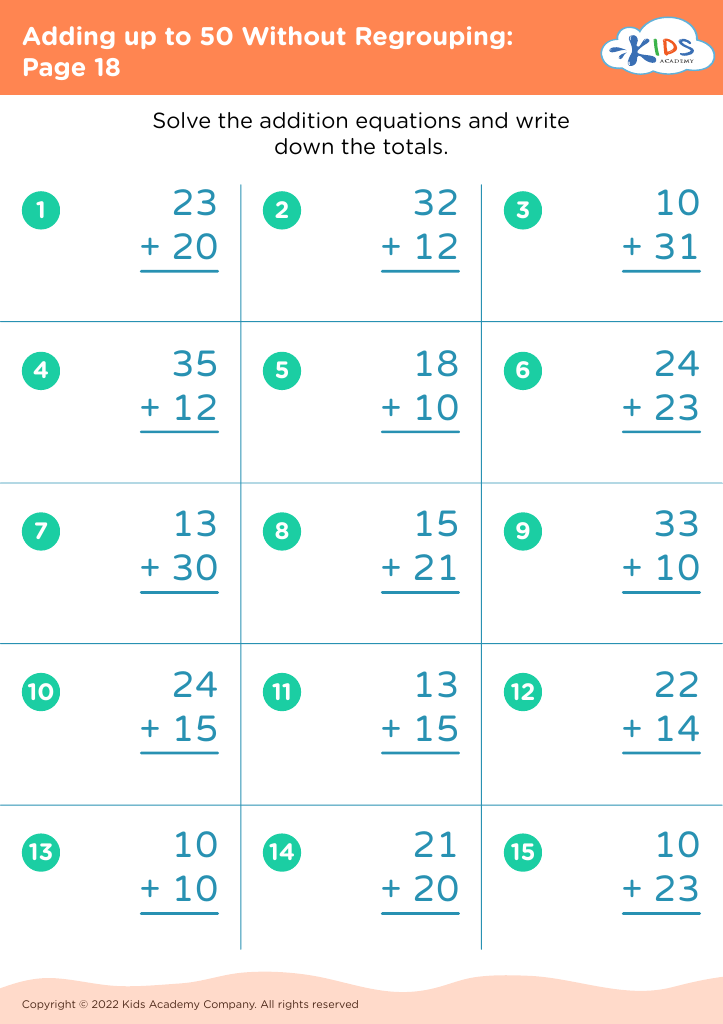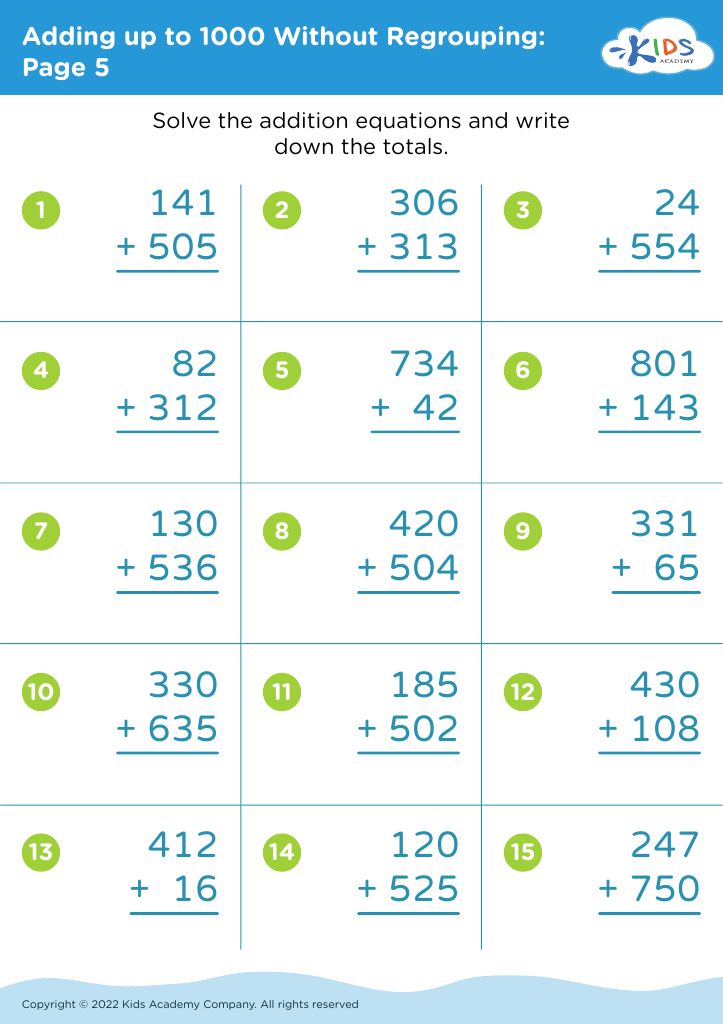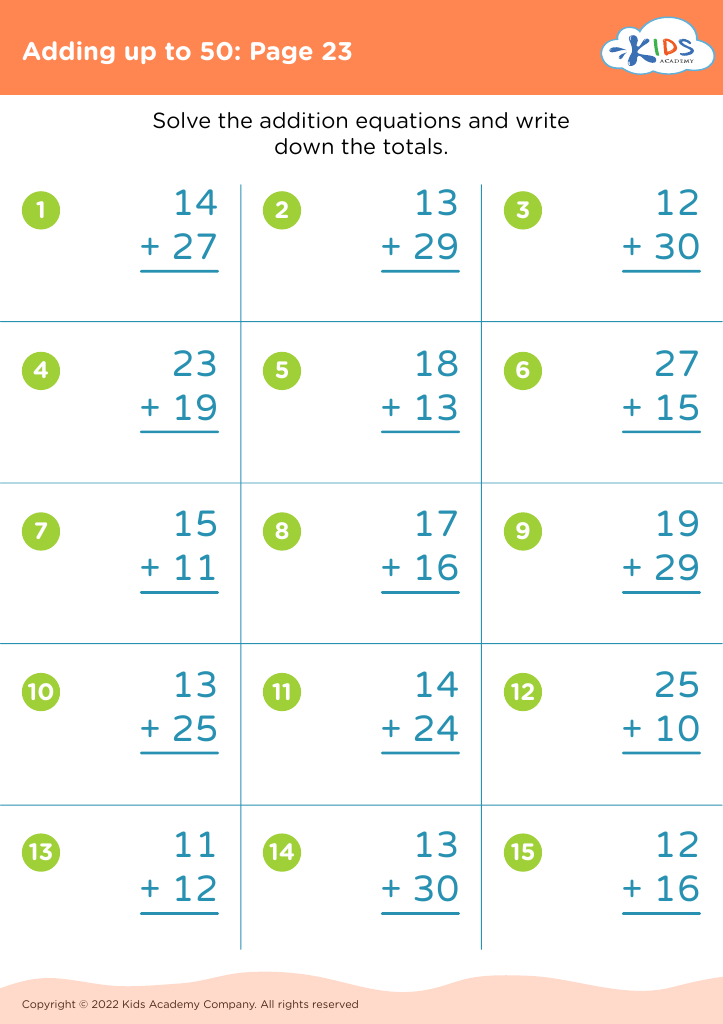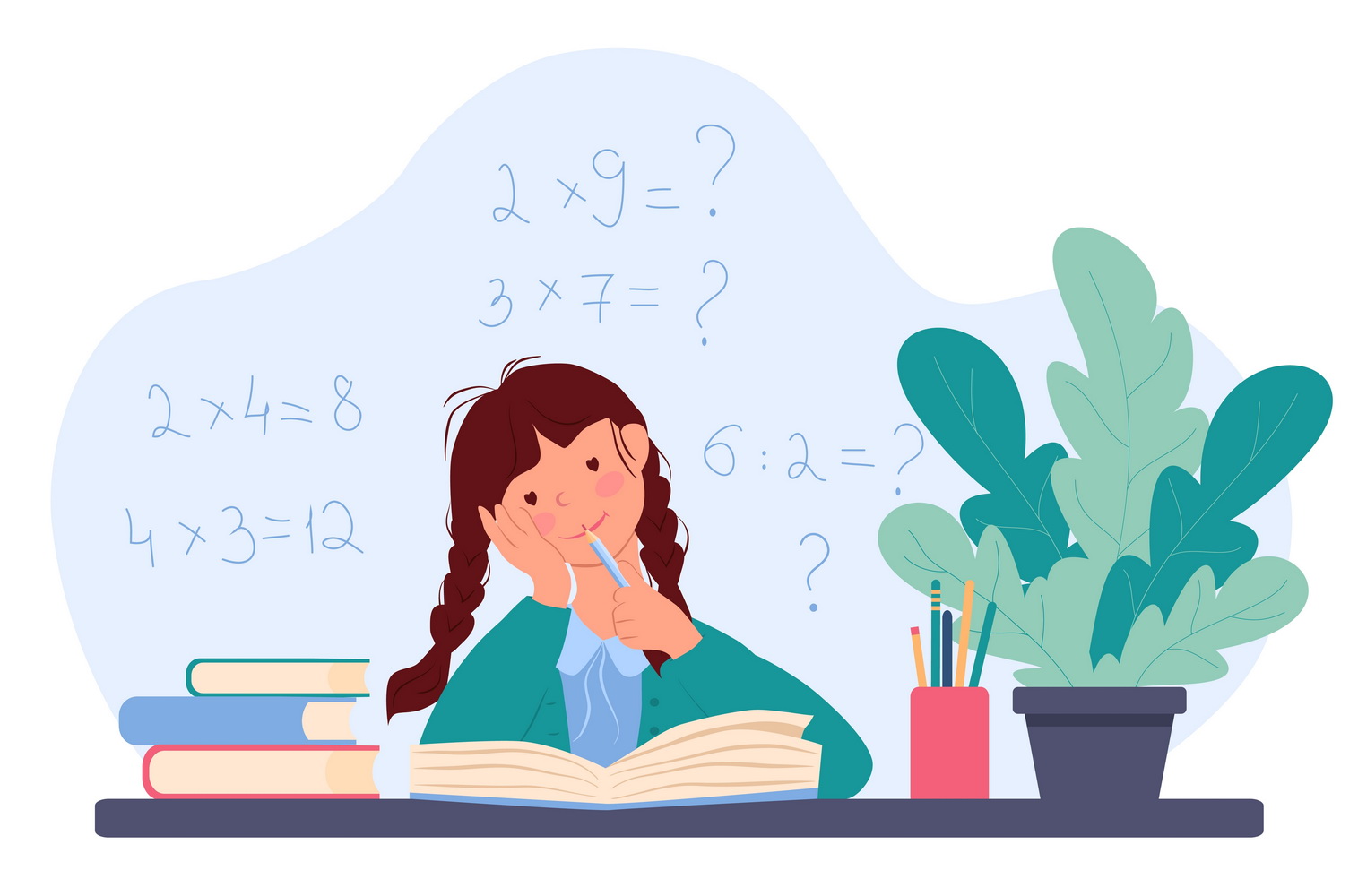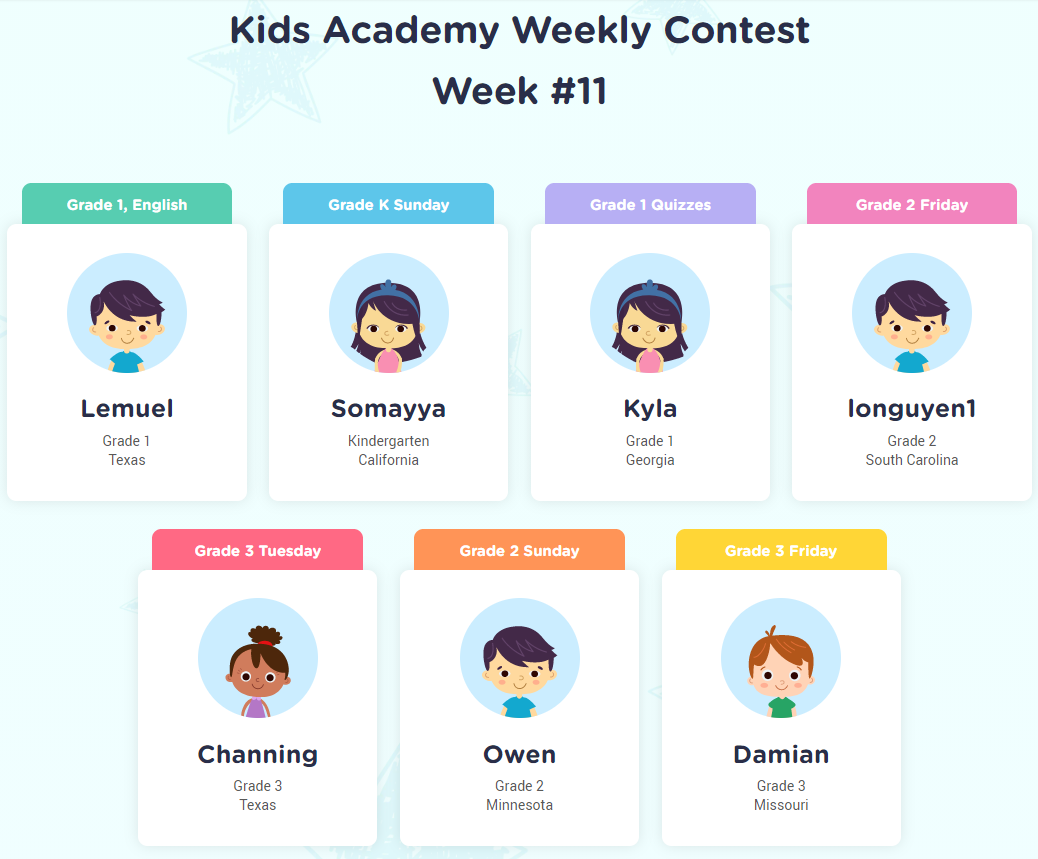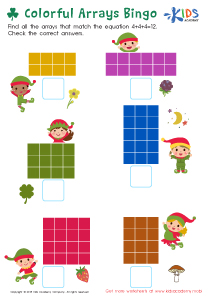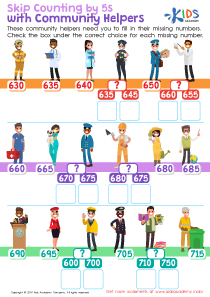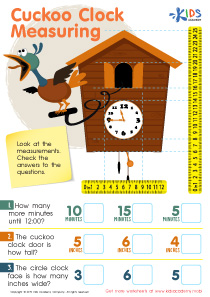Visual representation comprehension Grade 2 Math Worksheets
8 filtered results
-
From - To
Discover engaging Visual Representation Comprehension Grade 2 Math Worksheets designed to enhance your child’s understanding of mathematical concepts through visual aids. These worksheets provide a variety of interactive activities, including diagrams, charts, and images, helping students grasp essential math skills while fostering creativity and critical thinking. Perfect for classroom use or at-home practice, our resources support second graders in developing their ability to interpret visual data and solve problems effectively. Empower your child’s learning journey with these thoughtfully crafted worksheets that make math not only fun but also accessible and enjoyable! Explore our collection today and watch them excel in math!
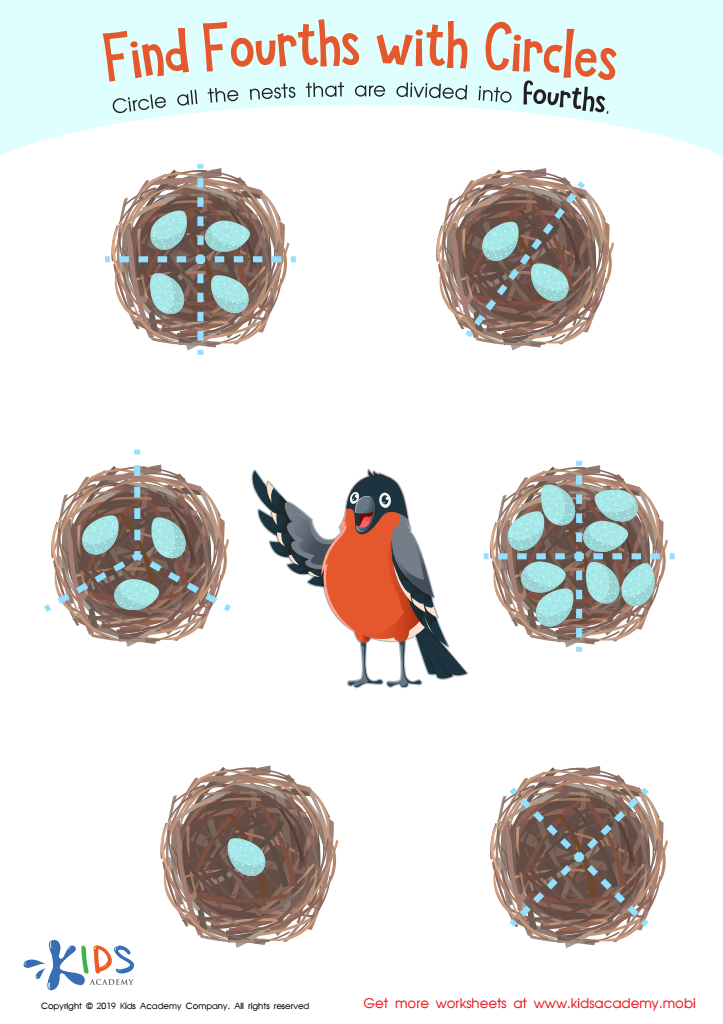

Find Fourths Circles Worksheet
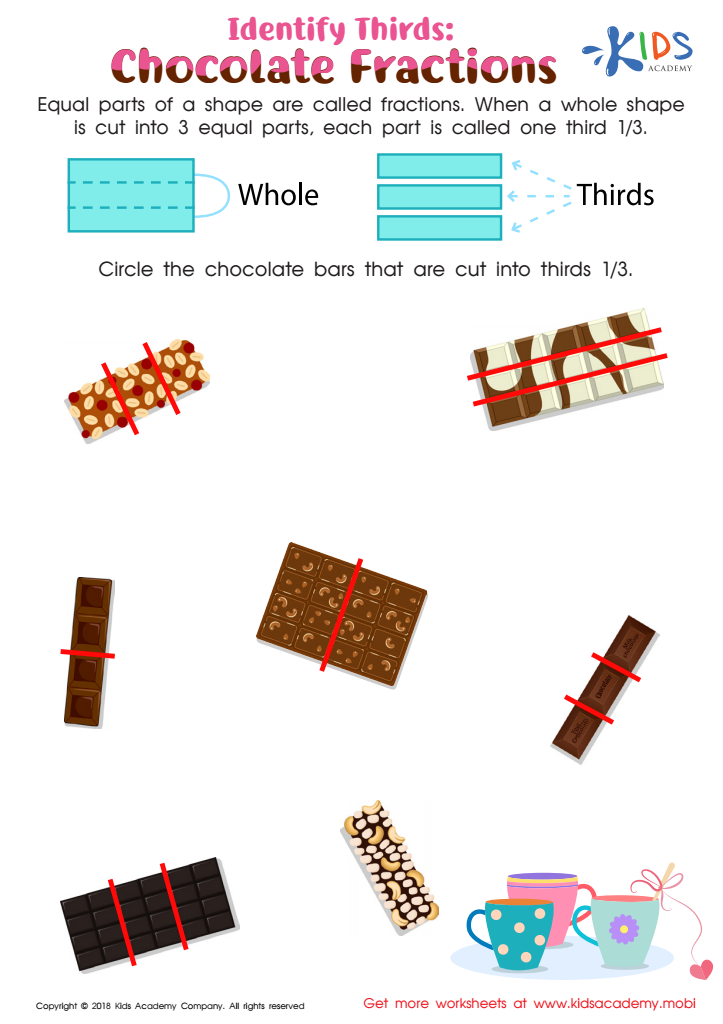

Identify Thirds: Chocolate Fractions Worksheet
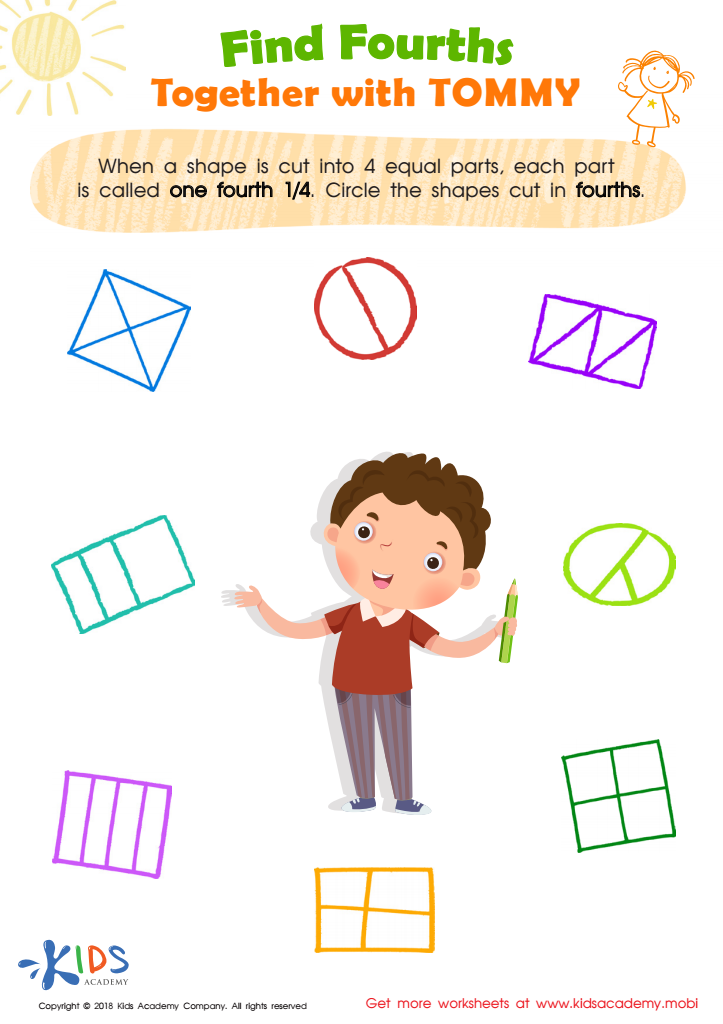

Find Fourths Together with Tommy Worksheet
Visual representation comprehension is crucial in Grade 2 math for various reasons that significantly impact students' learning. At this stage, children are beginning to develop their mathematical reasoning, and visual representations—such as bar graphs, number lines, pictures, and diagrams—play a vital role in illustrating complex concepts in a more accessible way.
Parents and teachers should care about visual representation comprehension because it enhances understanding and retention of mathematical ideas. For example, a child who can visually see the results of addition using counters or manipulatives will likely grasp the concept better than through numbers alone. This comprehension fosters critical thinking and encourages students to relate math to real-world situations.
Moreover, visual tools help cater to different learning styles. Some children are visual learners and benefit greatly from graphical depictions of problems, allowing them to engage more effectively with the material. As math builds on previous knowledge, strong visual comprehension lays the groundwork for more advanced concepts in later grades.
Encouraging visual representation comprehension also equips children with problem-solving skills, helping them navigate mathematical challenges independently. In turn, this nurtures confidence and a positive attitude toward math, crucial facets of lifelong learning.
 Assign to My Students
Assign to My Students

